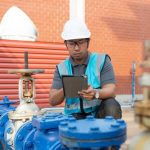Everything you Need to Know About Pump Installations

1. Choosing the Right Pump
The first step in pump installations is selecting the appropriate pump for your specific application. Consider factors such as the type of fluid you will be pumping, the flow rate and pressure requirements, and the distance the fluid needs to be transported. It is important to consult with experts or engineers to ensure you choose the right pump that suits your needs and is compatible with your system.
2. Site Preparation
Before the pump installation process begins, proper site preparation is essential. Ensure that the site is clean, level, and free from any obstructions. If necessary, create a stable foundation or platform for the pump to minimize vibrations and ensure stable operation. Adequate space should be provided around the pump for maintenance and inspection purposes.
3. Electrical Requirements
Depending on the type and size of the pump you choose, it is crucial to ensure that your electrical system can accommodate the pump’s power requirements. Make sure that the power supply is compatible with the pump’s voltage and phase requirements. Consult with an electrician to ensure proper electrical installation and avoid any potential electrical hazards.
4. Plumbing and Pipe Sizing
Proper plumbing and pipe sizing are essential for pump installations. The size and design of the pipes should be chosen based on the pump’s flow rate and pressure requirements. Consider the material of the pipes to ensure compatibility with the fluid being pumped. Properly calibrated valves should be installed to regulate the flow and prevent any backflow or pressure surges.
5. Installation Process
The actual pump installation involves carefully following the manufacturer’s instructions and guidelines. It is important to handle the pump with care to avoid any damage during the installation process. Connect the pump to the power supply and plumbing system according to the manufacturer’s specifications. Ensure that all connections are tight and secure to prevent leaks or system failures.
6. Testing and Commissioning
After the pump installation is complete, thorough testing and commissioning are necessary before putting the pump into regular operation. Test the pump’s performance by checking the flow rate, pressure, and level of the fluid being pumped. Verify that the pump is operating within the designated parameters. Conduct any necessary adjustments or fine-tuning to ensure optimal performance.
7. Regular Maintenance
To maximize the lifespan and efficiency of your pump, regular maintenance is crucial. Establish a maintenance schedule and adhere to it diligently. This may involve inspecting the pump for any signs of wear, checking and replacing filters regularly, lubricating moving parts, and conducting performance tests periodically. Proper maintenance will help identify and address any potential issues before they escalate into major problems.
8. Troubleshooting and Repairs
Even with regular maintenance, pumps can experience issues over time. It is important to have a troubleshooting plan in place to quickly identify and resolve any problems. This may involve consulting the pump’s manual or contacting technical support for guidance. In case of major failures or repairs, it is advisable to seek professional assistance to avoid further damage or safety risks.
Summary
Pump installations are a critical aspect of many industries and settings. By choosing the right pump, preparing the site properly, ensuring electrical requirements are met, sizing the plumbing correctly, following the installation process diligently, testing and commissioning, maintaining the pump regularly, and having a troubleshooting plan in place, you can ensure optimal performance and extend the lifespan of your pump. Consult with experts or professionals for guidance and assistance throughout the pump installation process to ensure seamless operations and efficient functioning of your system.
Need Pumping Equipment in Sunrise Beach, MO?
Categorised in: Pump Installations
